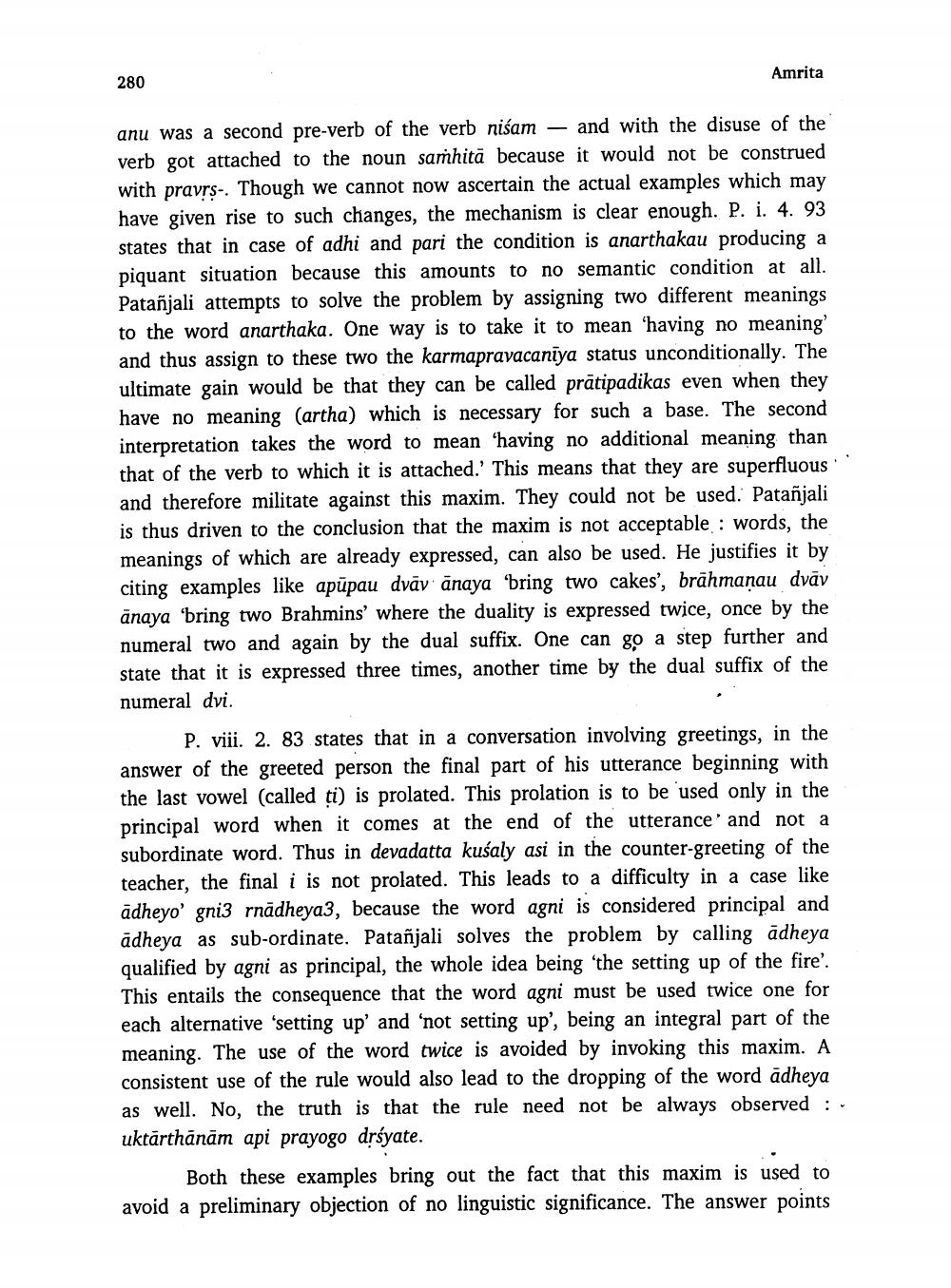________________
280
Amrita
anu was a second pre-verb of the verb nisam — and with the disuse of the verb got attached to the noun samhitā because it would not be construed with pravrs-. Though we cannot now ascertain the actual examples which may have given rise to such changes, the mechanism is clear enough. P. i. 4. 93 states that in case of adhi and pari the condition is anarthakau producing a piquant situation because this amounts to no semantic condition at all. Patañjali attempts to solve the problem by assigning two different meanings to the word anarthaka. One way is to take it to mean 'having no meaning' and thus assign to these two the karmapravacanīya status unconditionally. The ultimate gain would be that they can be called prātipadikas even when they have no meaning (artha) which is necessary for such a base. The second interpretation takes the word to mean 'having no additional meaning than that of the verb to which it is attached. This means that they are superfluous and therefore militate against this maxim. They could not be used. Patañjali is thus driven to the conclusion that the maxim is not acceptable : words, the meanings of which are already expressed, can also be used. He justifies it by citing examples like apūpau dvāv ānaya 'bring two cakes, brāhmaṇau dvāv anaya 'bring two Brahmins' where the duality is expressed twice, once by the numeral two and again by the dual suffix. One can go a step further and state that it is expressed three times, another time by the dual suffix of the numeral dvi.
P. viii. 2. 83 states that in a conversation involving greetings, in the answer of the greeted person the final part of his utterance beginning with the last vowel (called ti) is prolated. This prolation is to be used only in the principal word when it comes at the end of the utterance' and not a subordinate word. Thus in devadatta kuśaly asi in the counter-greeting of the teacher, the final i is not prolated. This leads to a difficulty in a case like adheyo' gni3 rnādheya3, because the word agni is considered principal and adheya as sub-ordinate. Patañjali solves the problem by calling adheya qualified by agni as principal, the whole idea being 'the setting up of the fire'. This entails the consequence that the word agni must be used twice one for each alternative 'setting up' and 'not setting up', being an integral part of the meaning. The use of the word twice is avoided by invoking this maxim. A consistent use of the rule would also lead to the dropping of the word adheya as well. No, the truth is that the rule need not be always observed :uktārthānām api prayogo drśyate.
Both these examples bring out the fact that this maxim is used to avoid a preliminary objection of no linguistic significance. The answer points




